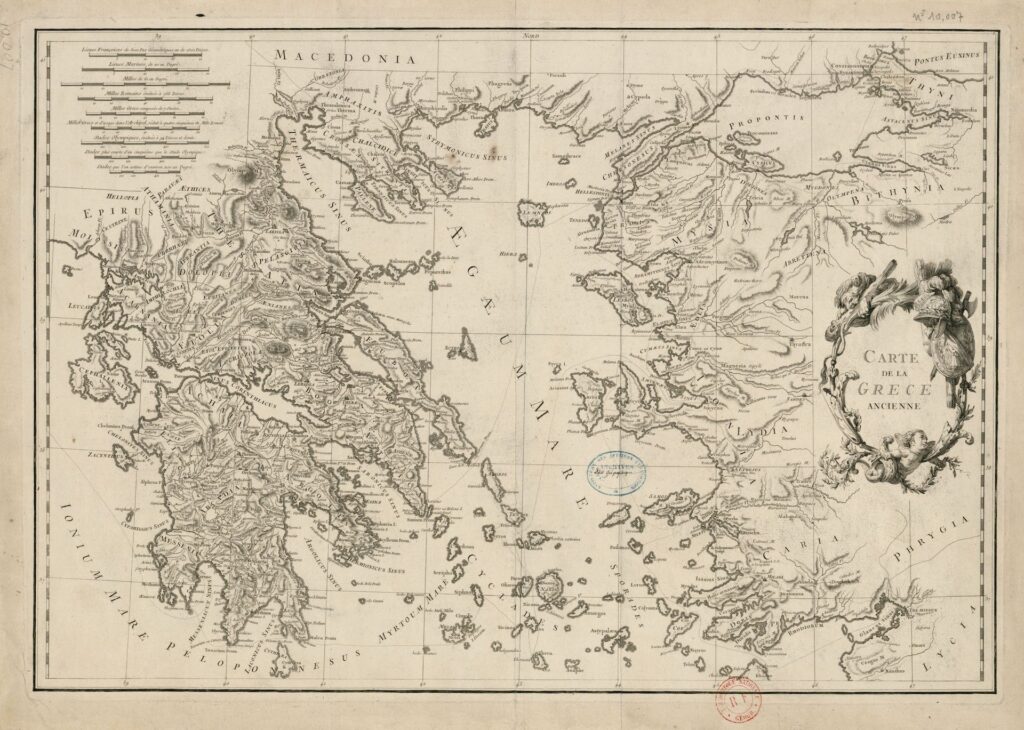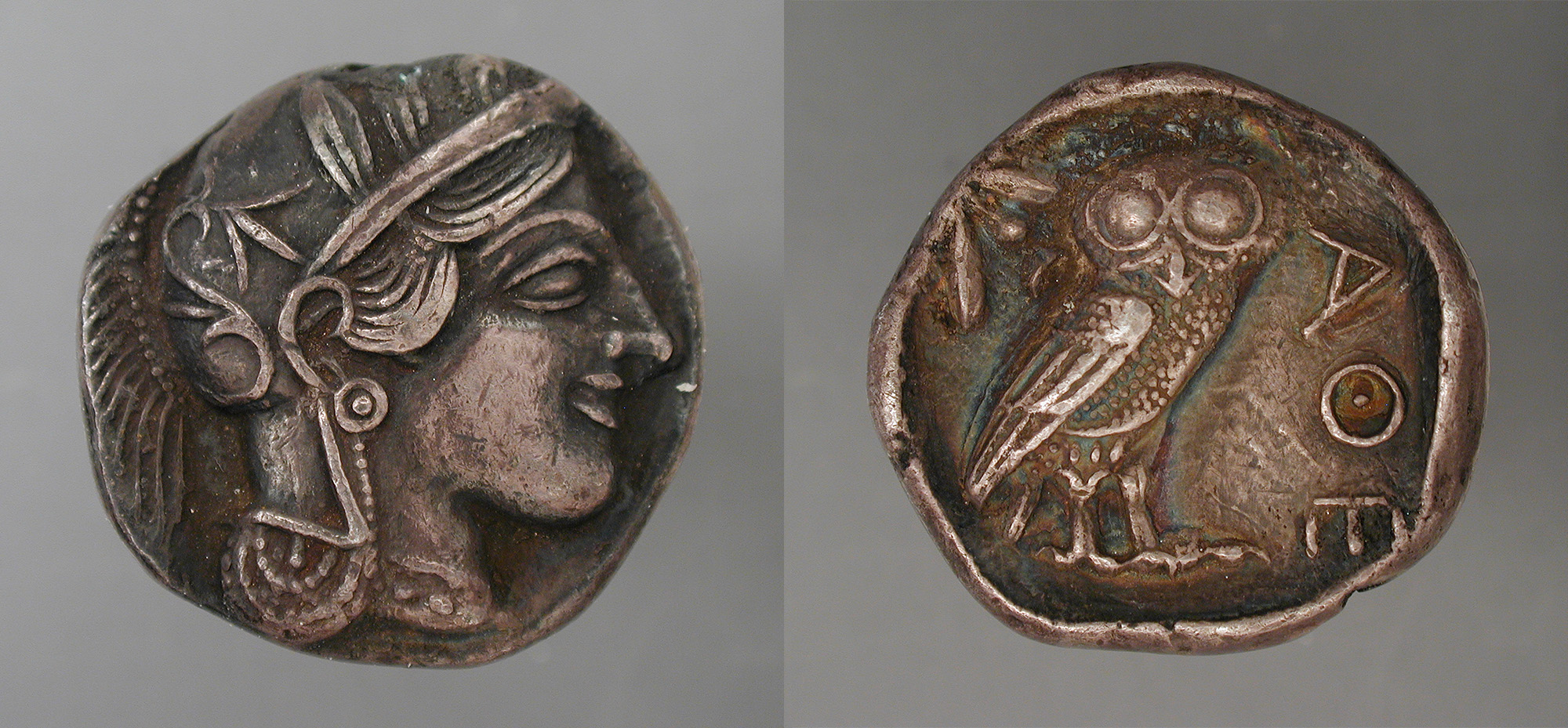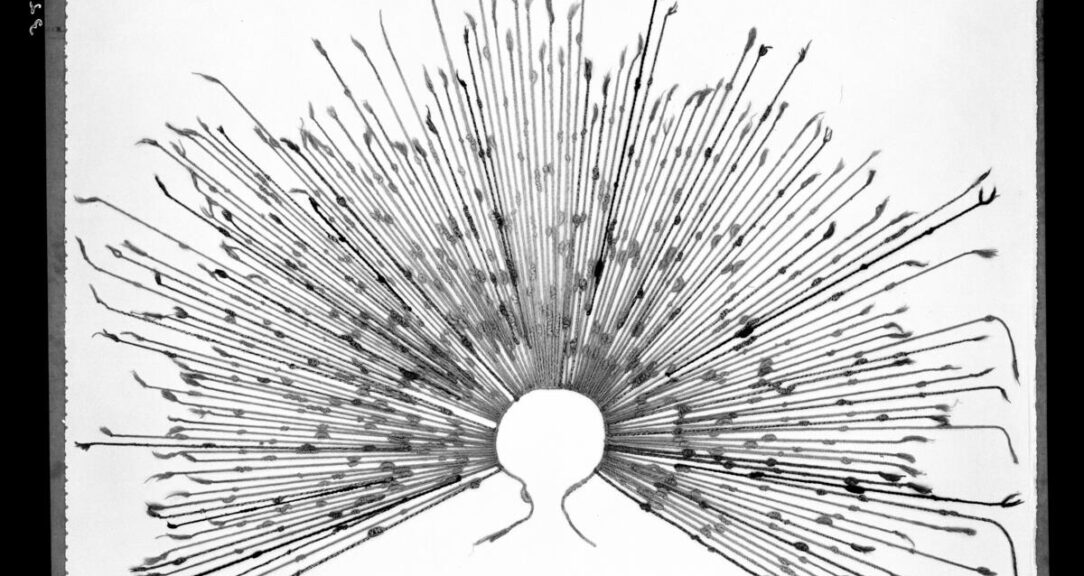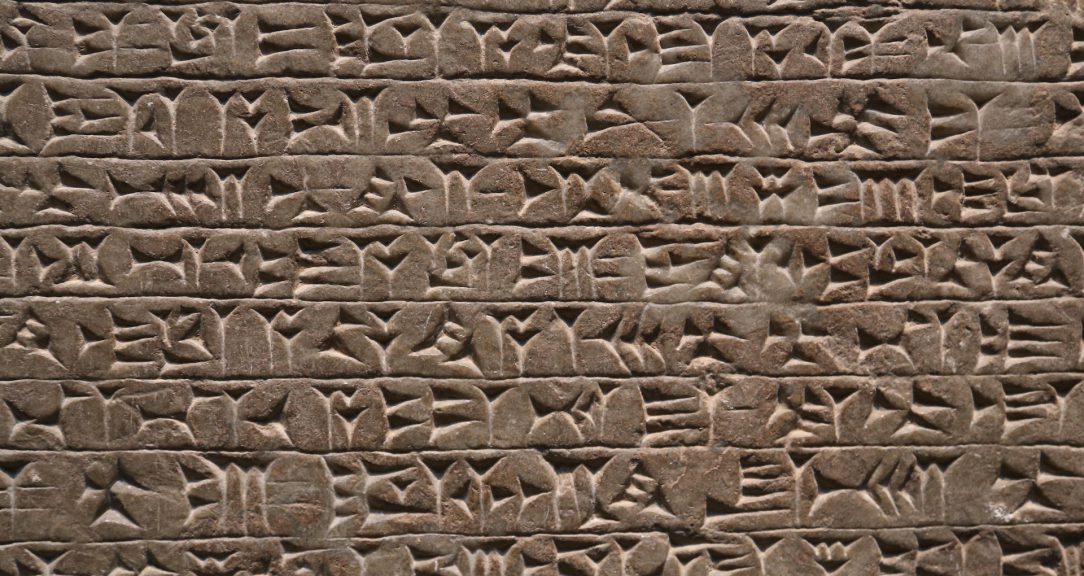Wealth, as it was first understood by the ancient Greeks, was derived from land, the animals it could sustain, and the fruit and grain it could produce. As Bronze Age towns grew into city-states, their economies became more sophisticated. Utensils that had once been prestige items were now used as payment. For example, a wayward official might be threatened with a 50-cauldron fine. Historian Herodotus writes that Rhodopis dedicated one-tenth of her substance to the temple at Delphi — this tithe was a large pile of iron spits for roasting oxen.
In this early period, the Phoenicians, seafaring people from the area surrounding modern-day Lebanon, dominated international trade. They dealt in silver, which was valued by weight and fineness. Rings and bracelets were sometimes roughly standardized for convenience; they, or any other silver available, could be chopped up to make the requisite weight. Silver for the Phoenicians, and later for the Greeks, was a true medium of exchange, but neither nation considered wealth a matter of how much silver one had. Not yet, at least.
In the poems of Homer, dated to around the 8th century BCE, value was quoted in oxen: A victorious wrestler received a bronze tripod worth 12 oxen, the loser a maidservant worth four. In “The Iliad,” Glaucus and Diomedes exchange armor on the battlefield as a token of friendship across enemy lines. Homer comments that one of the gods had taken Glaucus’ wits, as he exchanges golden armor worth 100 oxen for bronze worth only nine.
The rise of the coin
About a century later, in roughly 600 BCE, the first stamped coins appeared in Lydia, a kingdom in what is now western Turkey. Minted during the reign of Alyattas, the coin depicted the Lydian lion — the feline symbol of the kings of Lydia — and was pressed into disks of electrum, an alloy of gold and silver.
This coinage introduced the concept of branding a precious metal with an official state seal, distinguishing coins from tokens, barter items and other limited forms of money that preceded them — and connecting them to their modern-day successors.
The Lydian lion may have been introduced to pay soldiers, but the true reason remains unknown. Croesus, Alyettes’ son and the last king of Lydia, also produced both gold and silver coins, as did the Persians who conquered him. All of these examples, however, were used more for hoarding than for trade.
It was in Greece that coinage finally took off. Within a century of the appearance of the Lydian lion, more than 100 mints operated in Greece, which at the time consisted of more than 2,000 self-governing city-states. Most mints were small and minted coins only for special purposes — usually military in nature — but some city-states made wider use of their coins. Aegina’s “turtles” circulated well beyond their island-state, and the preferred currency on the shores of the Black Sea was the electrum coins of Cyzicus, a Greek town in Anatolia, which is now part of Turkey.
These paled in comparison, however, to the “owls” of Athens, which became the most common currency in most of Greece — and far beyond. Produced in quantity from Athenian silver mines, the owls retained the names of utensils: a small coin, 8 millimeters in diameter and weighing 0.72 grams, was an obol, or a “spit.” The six-obol coin was a drachma, or a “handful.”

A new kind of exchange
Coins didn’t do anything new per se, but they vastly simplified existing market exchanges. Moreover, coins were egalitarian; unlike bronze tripods or silver rings, anyone could have them, which meant citizens could acquire wealth regardless of family background. The market, now flourishing, offered a safety valve for the rural poor, offering an alternative to sharecropping for their wealthy neighbors.
The biggest change, though, was conceptual. Coins, themselves interchangeable, were something that could be exchanged for anything, and everything was equivalent to a certain number of coins. There was no word for money; it was called argyrion, meaning “silver,” or chremata, “useful things.” The coins themselves were collectively called nomismata, or “customary things.”
But it was an idea that had taken hold. Even more so than oxen, money measured everything, and the person with the most money was richest. Money could buy anything, and a sufficient sum could atone for most injuries. And unlike food or clothing, no amount was ever enough.
This was an entirely new way of thinking. In “The Odyssey,” Homer enumerated the wealth of Odysseus: 59 herds of cattle, pigs, sheep and goats, plus Odysseus’ chamber with “gold and bronze piled up and clothing in chests and plenty of fragrant oil and barrels of delicious old wine.” But nobody asked, “How many oxen is all of that worth?” Through coins, though, everything could be thought of in terms of money.
A lawyer could now speak of “a three-talent household” (a talent was equal to 6,000 drachmas) just as we speak of “a millionaire.” Whereas Homer or the Hebrew Bible would never use a number to account for all of a person’s wealth, today everybody thinks in those terms. We cannot imagine otherwise.
The idea takes root
It took some time for this new idea to change the world, but change the world it did.
Before, wealth followed power: Great men and women expected and received prestigious gifts. With coinage, wealth took the upper hand.
In the 550s BCE, an Athenian named Peisistratus twice achieved political power and ruled as a tyrant, and twice he was expelled. The third time, he proceeded more methodically. Collecting money from his political allies, he took the city with an army of hired soldiers and maintained his power by generosity. Future politicians followed his example.
Half a century later, Pericles, unable to match the generosity of his richer political rival Cimon, was advised “to give the multitude what was their own” — to curry favor with the poor by advocating for programs that would pay them out of the public till. Cimon, Pericles and their rivals all came from great families, but as coins made wealth more democratic, family connections became less important. By the next century, the great families had disappeared from Athenian politics, their place taken by people with newly acquired wealth.
Politics are forever altered
We cannot credit coins with the rise of democracy, but this form of money did make it possible for people to manage their collective resources. Barter and gift exchanges were personal and subjective, but coins could be counted, and Athens demanded that its office-holders account for every obol. For the first time, public officials receiving gifts in exchange for personal favors — or bribery — was frowned upon. Many Ancient Greeks did take bribes, but those who were caught and convicted were punished.
Money changed warfare, too. With an unexpected windfall of silver discovered near the city in 483 BCE, the Athenians built a navy, and when the Persian king Xerxes invaded, they defeated him at the Battle of Salamis in 480 BCE. After the war, they allowed their allies to contribute money rather than warships, converting an alliance of equals into an empire where Athens ruled the waves. The Athenians built walls down to the city’s port, and when the Spartans, the greatest land warriors in Greece, attacked them and ravaged their territory during the Peloponnesian War (431–404 BCE), they withdrew behind their walls and supplied themselves with imports.
For the length of the 27-year conflict, Athenian naval power fought Spartan land power. But the greatest power of all was money, which both sides desperately needed to stay in the fight. During the war, a warship crew of 200 rowers would have been paid a talent for a month’s work, the equivalent of one drachma per rower per day. To cover costs, both sides appealed to the Persians for funds, which allowed the fighting to continue for decades. Sparta eventually won.
A new commercial possibility
Back in the commercial realm, another entirely new practice arose: using money to make money. In the market each morning, obolostatai (“obol-weighers”) lent trivial sums with which penniless retailers bought merchandise to sell during the day, returning the loan with interest in the evening. The obolostatai, like modern loan sharks, were held in contempt, but their small contributions kept many small retailers afloat.
But the Greeks also invented a business whose goal was to produce risky income from other people’s money: the bank. They called this business a “table” (trapeza), a word still used by Greeks today. The origins of the word “bank” are found in the Venetian word for the table, or “banco.”
Some of the more aggressive lenders offered high-risk, high-reward maritime loans in which merchants borrowed large sums at high interest rates — sometimes 50% or more — that they had to repay if the ship made it back safely. In the case of shipwreck, though, the debt would be wiped clean, even if the borrower and crew managed to survive.
Banks never dominated the ancient Greek economy in the way they dominate our own. But money sure did.
Read more
Sign up to keep up to date with ReThink Q.







